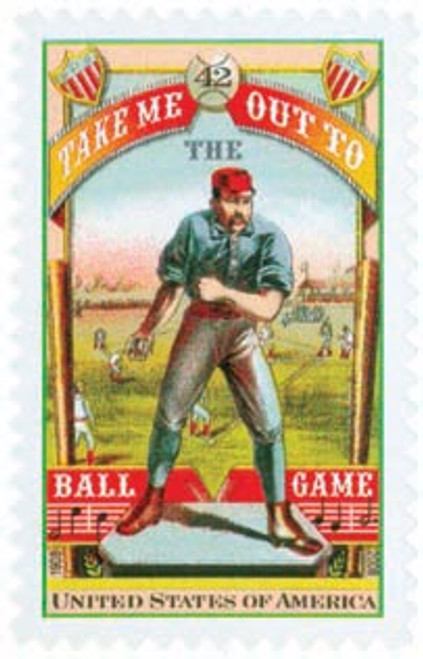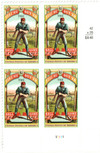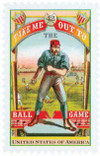
# 4341 - 2008 42c Take Me Out to the Ballgame
U.S. #4341
Take Me Out to the Ball Game
Issue Date: July 16, 2008
City: Washington, DC
“Take Me Out To The Ball Game”
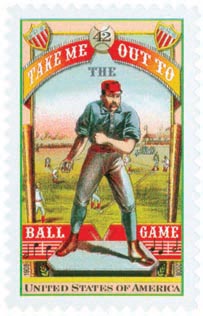
On May 2, 1908, “Take Me Out to the Ball Game” was submitted to the US Copyright Office. Neither of the men involved in its creation had ever seen a baseball game.
Earlier in 1908, songwriter Jack Norworth was riding the subway in New York when he happened to glance out the window and find inspiration in a sign. It simply said, “Baseball Today – Polo Grounds.”
Though Norworth had never been to a baseball game, the simple poster seemed to spark his imagination and he quickly got an idea for a skit involving a woman who was more of a baseball fan than the boys. He pulled out a piece of paper and during his 15-minute subway ride, penned the song. In the full song, a woman named Katie Casey tells her beau she’ll only accept a date if he takes her to a baseball game.
Norworth was excited over his new song but needed a tune to go with it, so he contacted composer Albert von Tilzer, who had also never been to a baseball game. (They would both finally see their first game more than 20 years after composing the song.) Tilzer went about creating the tune, and when it was done, they submitted it to the US Copyright Office on May 2, 1908.
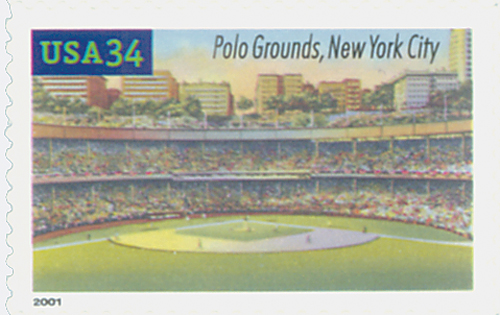
Norworth and his wife began performing the song on the vaudeville circuit and that October, Edward Meeker recorded it for the Edison Phonograph Company. The recording was a hit – it was the top song in the country for seven weeks and became the most popular song of the year. The song’s female point of view made it popular with women, who bought the sheet music to play on the piano.
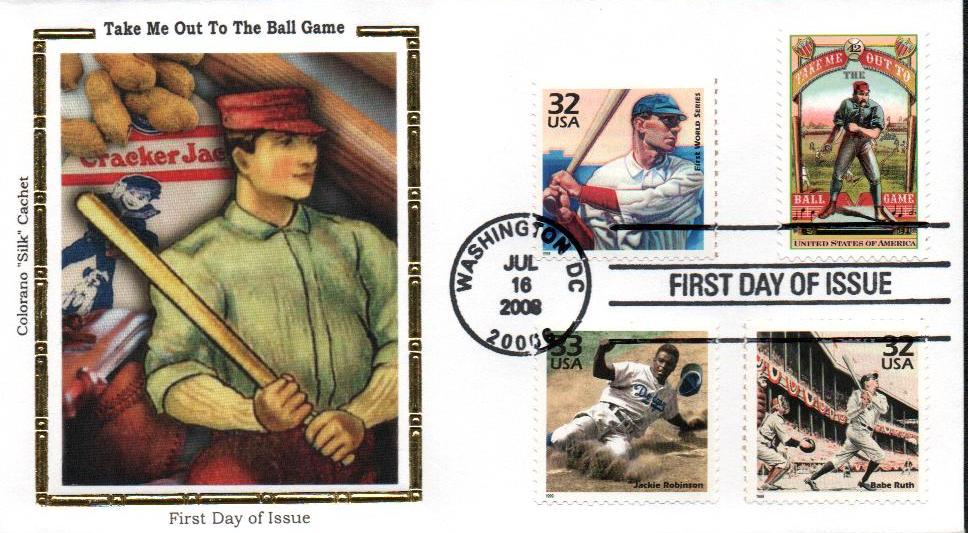
In spite of the song’s popularity, it was more than 20 years before it was ever sung at a baseball game. The first known instance of the song being performed at a baseball field was during a high school game in Los Angeles in 1934. Later that year, it was also played during the fourth game of the World Series.
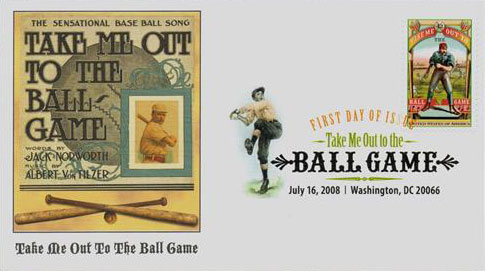
Then in the 1970s, Chicago White Sox announcer Harry Caray and owner Bill Veeck made the song a baseball tradition. Veeck suggested that Caray sing the song over the loudspeaker and now the song is the anthem of the seventh inning stretch in nearly every major and minor league baseball park.
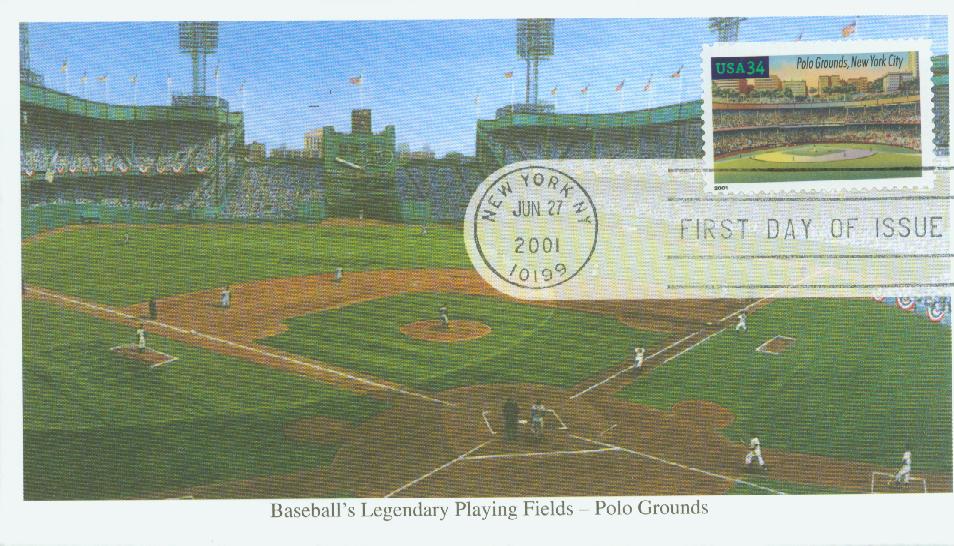
Click here to listen to the Edward Meeker recording and click here to read both versions of the song.
U.S. #4341
Take Me Out to the Ball Game
Issue Date: July 16, 2008
City: Washington, DC
“Take Me Out To The Ball Game”

On May 2, 1908, “Take Me Out to the Ball Game” was submitted to the US Copyright Office. Neither of the men involved in its creation had ever seen a baseball game.
Earlier in 1908, songwriter Jack Norworth was riding the subway in New York when he happened to glance out the window and find inspiration in a sign. It simply said, “Baseball Today – Polo Grounds.”
Though Norworth had never been to a baseball game, the simple poster seemed to spark his imagination and he quickly got an idea for a skit involving a woman who was more of a baseball fan than the boys. He pulled out a piece of paper and during his 15-minute subway ride, penned the song. In the full song, a woman named Katie Casey tells her beau she’ll only accept a date if he takes her to a baseball game.
Norworth was excited over his new song but needed a tune to go with it, so he contacted composer Albert von Tilzer, who had also never been to a baseball game. (They would both finally see their first game more than 20 years after composing the song.) Tilzer went about creating the tune, and when it was done, they submitted it to the US Copyright Office on May 2, 1908.

Norworth and his wife began performing the song on the vaudeville circuit and that October, Edward Meeker recorded it for the Edison Phonograph Company. The recording was a hit – it was the top song in the country for seven weeks and became the most popular song of the year. The song’s female point of view made it popular with women, who bought the sheet music to play on the piano.

In spite of the song’s popularity, it was more than 20 years before it was ever sung at a baseball game. The first known instance of the song being performed at a baseball field was during a high school game in Los Angeles in 1934. Later that year, it was also played during the fourth game of the World Series.

Then in the 1970s, Chicago White Sox announcer Harry Caray and owner Bill Veeck made the song a baseball tradition. Veeck suggested that Caray sing the song over the loudspeaker and now the song is the anthem of the seventh inning stretch in nearly every major and minor league baseball park.

Click here to listen to the Edward Meeker recording and click here to read both versions of the song.

